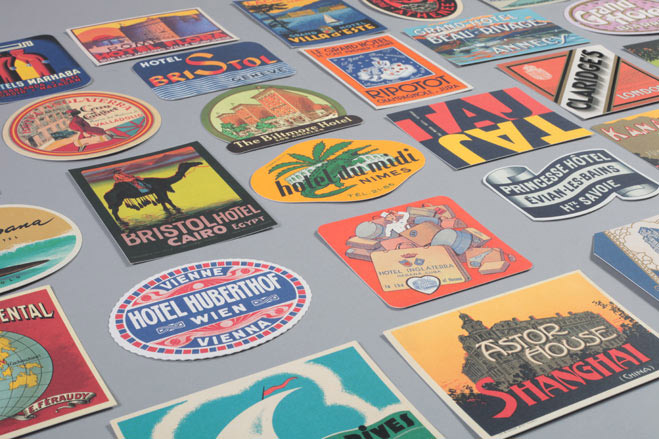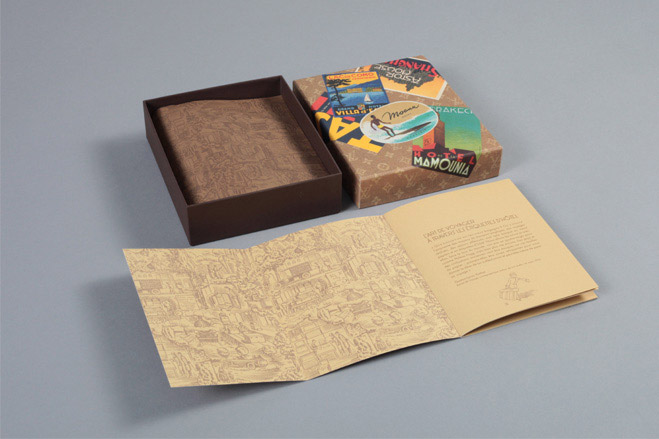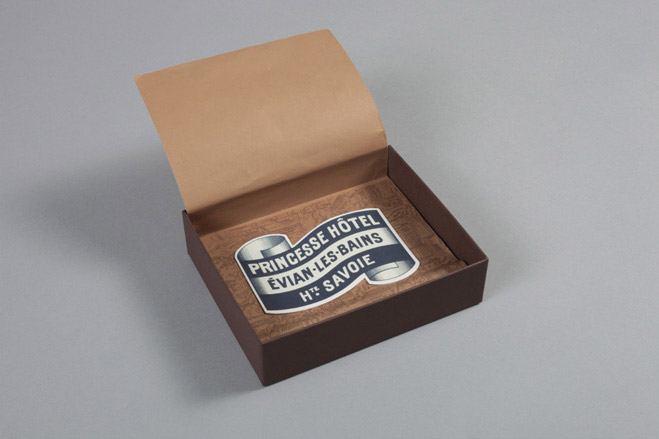The Louis Vuitton hotel label postcards

Emblazoned on most luggage trunks at the turn of the 20th century up until the 1960s, hotel labels were the definitive marker of travel sophistication. Louis Vuitton’s grandson Gaston-Louis clearly had a severe case of wanderlust, collecting over 3,000 stickers before his death in 1970. Carefully hidden away in the House archives, his sizeable collection, whittled down to a manageable 30, has now been reproduced for a Louis Vuitton box set of hotel postcards.
Essentially a travelogue of the journeys and stopovers made by the owner of a certain trunk, hotel stickers were conceived as a clever marketing tool - practically any hotel, large or small, could advertise itself through the luggage of its guests.
A good hotel sticker was about more than just function, however, becoming a thing of beauty in itself, as seen from the Louis Vuitton edit. Fittingly, the fashion brand’s cards can be also used for their original function, doubling as luggage labels thanks to their peel-off adhesive feature.
A tour around some of the world’s most notable hotels, the postcards come in all manner of shapes, colours and sizes, and are a charming, colourful and graphic memento of the golden age of travel.

Louis Vuitton’s grandson Gaston-Louis clearly had a severe case of wanderlust, managing to collect no less than 3,000 stickers during his lifetime

Carefully hidden away in the French fashion house’s archives, his sizeable collection has now been whittled down to a manageable 30 and reproduced for a new Louis Vuitton box set of postcards, which also fittingly double as luggage labels, thanks to their peel-off adhesive feature

The postcards in the box set come in all manner of shapes, colours and sizes and reveal a charming, colourful and graphic picture of the golden age of travel. Pictured here is ’Monopol Hotel, Leipzig, Hauptbahnhof’

Postcard for Grand Hôtel Venise

’Princesse Hôtel Evian-les-Bains, Haute Savoie’

’Hotel Belles Rives Juan-les-Pins’

’Hotel Bristol, Geneve’

’Taj’ Hotel
Wallpaper* Newsletter
Receive our daily digest of inspiration, escapism and design stories from around the world direct to your inbox.
-
 All-In is the Paris-based label making full-force fashion for main character dressing
All-In is the Paris-based label making full-force fashion for main character dressingPart of our monthly Uprising series, Wallpaper* meets Benjamin Barron and Bror August Vestbø of All-In, the LVMH Prize-nominated label which bases its collections on a riotous cast of characters – real and imagined
By Orla Brennan
-
 Maserati joins forces with Giorgetti for a turbo-charged relationship
Maserati joins forces with Giorgetti for a turbo-charged relationshipAnnouncing their marriage during Milan Design Week, the brands unveiled a collection, a car and a long term commitment
By Hugo Macdonald
-
 Through an innovative new training program, Poltrona Frau aims to safeguard Italian craft
Through an innovative new training program, Poltrona Frau aims to safeguard Italian craftThe heritage furniture manufacturer is training a new generation of leather artisans
By Cristina Kiran Piotti